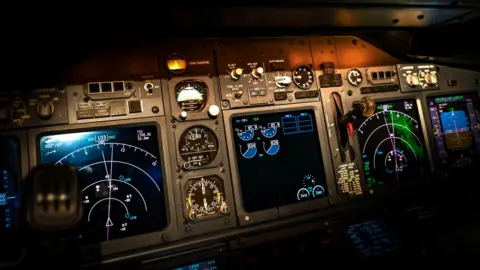The investigation into the tragic Air India plane crash that occurred in June has initiated widespread concerns regarding the safety of Boeing aircraft. Following preliminary findings that indicated the plane's fuel supply was purposely cut off shortly after takeoff, regulators across India and South Korea have mandated urgent inspections of the fuel control switches on their Boeing fleets. Notably, Singapore Airlines and its subsidiary, Scoot, have also completed these inspections in response to the incident.
The report from Indian investigators highlighted that the fuel control switches on Flight 171 had been turned off mere seconds after the aircraft ascended, a detail that raises alarms among aviation experts. Each switch employs a locking mechanism designed to prevent any unintended manipulation. This has led many to suspect that the switches' disarming was likely due to human action, rather than an accidental trigger.
This situation ties back to a Federal Aviation Administration (FAA) advisory from 2018 that recommended airlines operating Boeing models, including the 787, examine the locking mechanism on fuel controls to ensure they remain secure against accidental movement. Alarmingly, the preliminary report revealed that Air India had not performed the recommended inspections, as they were not deemed mandatory. The FAA itself had previously dismissed concerns over the locking mechanism as not serious enough to pose a safety risk.
As the investigations continue, the unfolding situation cautions against complacency in aviation safety protocols, urging regulatory bodies to reassess the measures necessary for ensuring the security and reliability of aircraft systems.
The report from Indian investigators highlighted that the fuel control switches on Flight 171 had been turned off mere seconds after the aircraft ascended, a detail that raises alarms among aviation experts. Each switch employs a locking mechanism designed to prevent any unintended manipulation. This has led many to suspect that the switches' disarming was likely due to human action, rather than an accidental trigger.
This situation ties back to a Federal Aviation Administration (FAA) advisory from 2018 that recommended airlines operating Boeing models, including the 787, examine the locking mechanism on fuel controls to ensure they remain secure against accidental movement. Alarmingly, the preliminary report revealed that Air India had not performed the recommended inspections, as they were not deemed mandatory. The FAA itself had previously dismissed concerns over the locking mechanism as not serious enough to pose a safety risk.
As the investigations continue, the unfolding situation cautions against complacency in aviation safety protocols, urging regulatory bodies to reassess the measures necessary for ensuring the security and reliability of aircraft systems.





















